Has the Ark of the Covenant Been Found?
June 28, 2010
by Idiot Savant
(for henrymakow.com)
Here is a partial list of those who have been looking for The Ark of he Covenant in the last 2,500 years.
The Templars
The Freemasons
The Illuminati
The Rosicrucians
The Israelis
The Jesuits
The Zionists
The Rothschilds
Can you say "Secret Societies!" without blinking?
All come down to a 404 -not found. A lot about Ethiopia, Jordan, France, Zimbabwe, Ireland, Greek Islands -but no goods to deliver. A lot of hot air and cool cash and lecture circuits and Indiana Jones', that's it.
Until now.
The Ark of the Covenant has been found, but not excavated. Not yet.
What are we dealing with when we say "Ark of the Covenant", "Ark of God", "Ark of thy God's strength", "Ark of the Covenant of the Lord of all the Earth", or "Ark of the Testimony".
What is it, and who paid for it?
Apparently on Mount Sinai, God told Moses to build a wooden box, cover it with gold inside and outside, add two poles to carry it and two cherubim (also made of gold) facing each other as its lid. The area between the two cherubim and the top of the box was called "The Mercy Seat" for some good reason, though nobody is reported to have sat there.
When Moses wandered through the desert for 40 years, he and his people followed the Ark to wherever it led them. By day, it emitted a vertical cloud vortex, by night it was a light column. When they camped, it was kept in a special tent called the Tabernacle. The interesting question here is not the Ark as a gold-plated box - but what it contained.
It contained the power supply of the Great Pyramid, originally housed in the granite "sarcophagus" (nobody buried in it) inside the "King's Chamber". Since God gave Moses the exact dimensions, and we know the inside and outside dimensions of the granite sarcophagus, which is still in Egypt today, we know there is a perfect fit here. They could never steal the sarcophagus as it won't fit through the door - the chamber housing it was built around it. Moses was of course initiated into the Egyptian inner circle.
The Ark is also called the Tetragrammaton. The device through which one could communicate with God -or God with one.
For a good hypothesis dealing with this Tetragrammaton, you need to get in touch with Nassim Haramein, who has some good points to make about it. Plenty of videos out there. The Ark parted the waters of the Jordan River and the Red Sea, don't ask how, and gave the Israelites quite an edge in warfare. They carried it around the walls of Jericho once a day for a week, sounding seven ram's horns, and the walls just gave up and crumbled. Some Ark, you say? The Philistines captured it from the Hebrews, but gave it back shortly thereafter, citing some sort of problem with it: hemorrhoids, and a plague of mice.
Eventually, it was placed in Jerusalem inside the Holy of Holies, in the center of King Solomon's temple, back then the largest one on earth. Today, this same place is called The Dome of the Rock. One had to be prepared to get near the Ark, or face death. Cloud emissions are associated with the Ark, filling the temple when the priests came out of the chamber where it stood.
One smoking iPhone of God. In this case, engraved with the letters "EL".
What happened to it?
In 586 BC, the Babylonians (Assyrians) under Nebuchadnezzar laid siege to Jerusalem and eventually sacked the place. There is no record that they found and took with them the Ark of the Covenant. In fact, the Second Temple (2.0) had an empty Holy of Holies. Few people likely knew that it was so, but ... I digress.
The Ark was never found again, and the references in the Bible and the Quran stop here.
Where is it?
The Templars actually started out as a low-paid digging crew. That is what they did for the first ten years, before getting into crusades and banking. Where did they dig? In Jerusalem, under Solomon's Temple. What where they looking for? Exactly. It.
There is a rather interesting book that says that ancient writing on a recently excavated wall has been deciphered. The translated text says where the Ark is buried, who did it, and why.
Best of all, it says that the Ark is buried inside the wall itself, under tons of sand.
The wall has a row of now-identified and translated text running along its outside

The row of text on the wall is at the height of the standing person's elbows
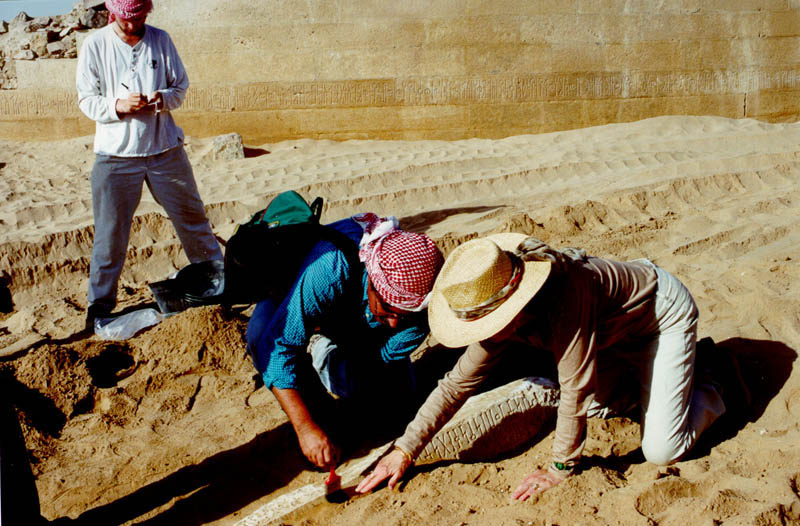
The huge circular wall in the background, behind the partly excavated palace with pillars
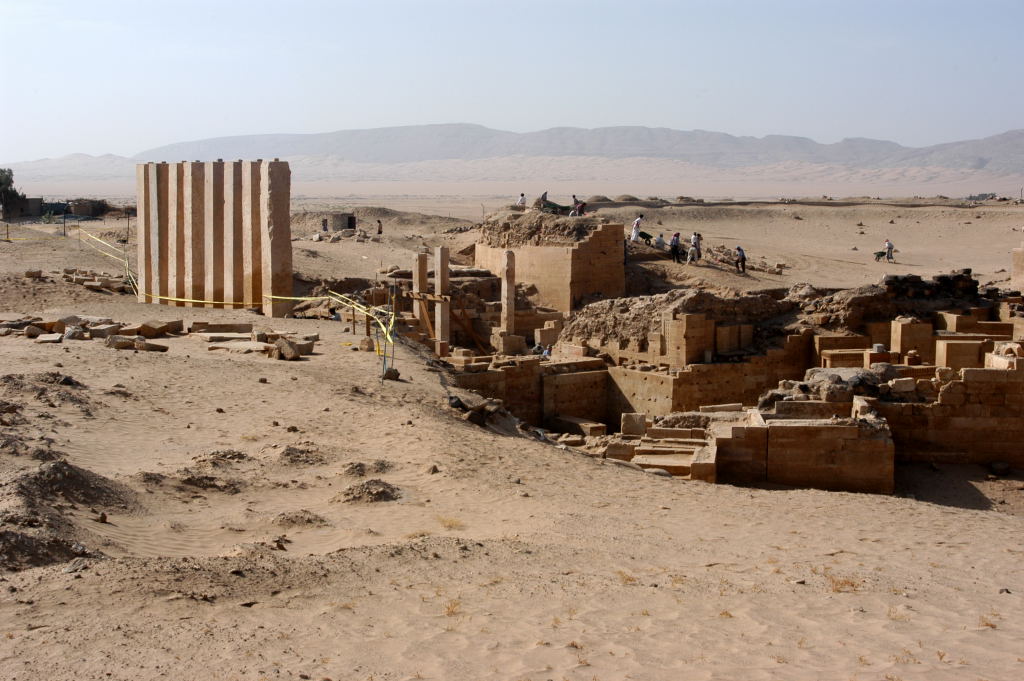
The eight pillars of the palace before recent excavations The still unexcavated palace of the Queen of Sheba in the Republic of Yemen. What does this have to do with ... whatever?
Good question. If it were not for the fact that our dear secret societies have been looking for the Ark of the Covenant for over 2,000 years, unsuccessfully one must add, then this could be dismissed as just another bit of speculation one can find on the web in these most interesting times.
This place in Yemen is now protected by at least six SAM surface-to-air missile launchers. And there has been found "something" under the sands inside the wall with the help of ground-penetrating radar.
Six surface-to-air missile launchers are positioned a few miles from the area (Google Earth)
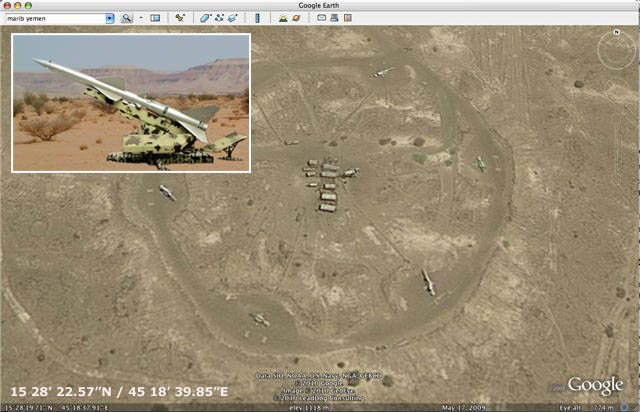
You can actually download a simple computer program which translates the so-called "proto-Caananite" on the wall into ancient Hebrew, and from there into English.
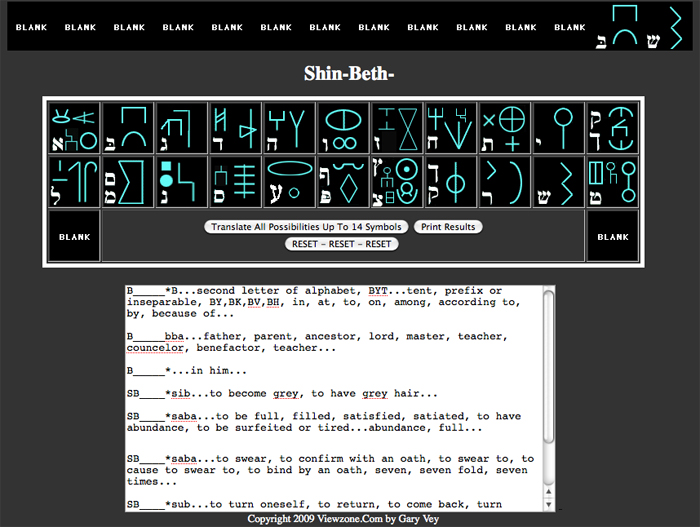
It is open-source now, no need to trust any scientist-priest with this.
Now what?
Personally, I find it indescribably hilarious that none of the heavyweight lodges, secret and not-so-secret societies, or even the Dimlluminati, have been able to do better than one independent, low-budget web magazine editor and his fellow researchers.
That alone gives a lot of hope, particularly when you are not a member of any of them.
---
Related:
http://www.viewzone.com/never/never.html
-







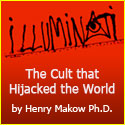
Ralph Ellis said (July 1, 2010):
Some answers to other postings
a. There was no Solomon's Temple in Jerusalem.
True - Jerusalem was just a village at the time, according to Israeli archaeologist Prof Finkelstein. But there may have been a confusion of terms here. It was not the Temple of Zion, but the Temple of Zoan - Tanis in Egypt. This is where is was built.
b. There was no Exodus.
Wrong, there was a very great Exodus - the Hyksos Exodus from Egypt (see below). Question is, are they the same event and people? Since both exoduses started with storms, darkness and an ash cloud, it is likely they were the same Exodus.
c. There was no Moses.
Wrong, there were many Moseses, as it is a very common Egyptian name (TuthMoses, AhMoses, RaMoses). Question is - which one? I think he was TuthMoses, the brother of Akhenaton.
d. There was no Yahweh.
Probably wrong. Yahweh was a derivation of Yah, the Moon-god of Egypt (Thoth, or Djehwyti).
e. Cherub
Probably derived from the Egyptian Karub, meaning 'sphinx'. If you look at Phoenician and early Israelite iconography, you will find that the king's throne is always flanked by two winged sphinxes with human faces - cherubs. So now you know what was on top of the Ark.
f. Jeremiah 3:16 - they will not remember the Ark.
Indeed, because it was taken from Jerusalem either by Menelek (10th century BC) or by Jeremiah's exiles (6th century BC). So yes, they people of Jerusalem/Tanis would not remember it or visit it.
g. No Jews/Israelites in Egypt.
Not under that name, no. But if the Israelites were the Hyksos people, then they are very well known in Egypt. The Hyksos were the circumcised shepherds who wore curly side-locks of hair and earrings, who fought a battle with the (Upper) Egyptians - but there was a period of darkness, storms, ash and deaths, and 500,000 Hyksos were evicted from Egypt on a great exodus - travelling from Pi-Rammese to Jerusalem.
Familiar story? (P.S. This is real history from any history book. Just join up the dots.)
It is likely that Patriarch Joseph was Yuya, while Moses was TuthMoses the brother of Pharaoh Akhenaton.
h. God = hail, lightening and earthquakes. This is the Hebrew god called Shaddai, the god of thunder and lightening - in reality a description of the eruption of Thera, the event that caused the Exodus in the first place (see book: Tempest & Exodus)